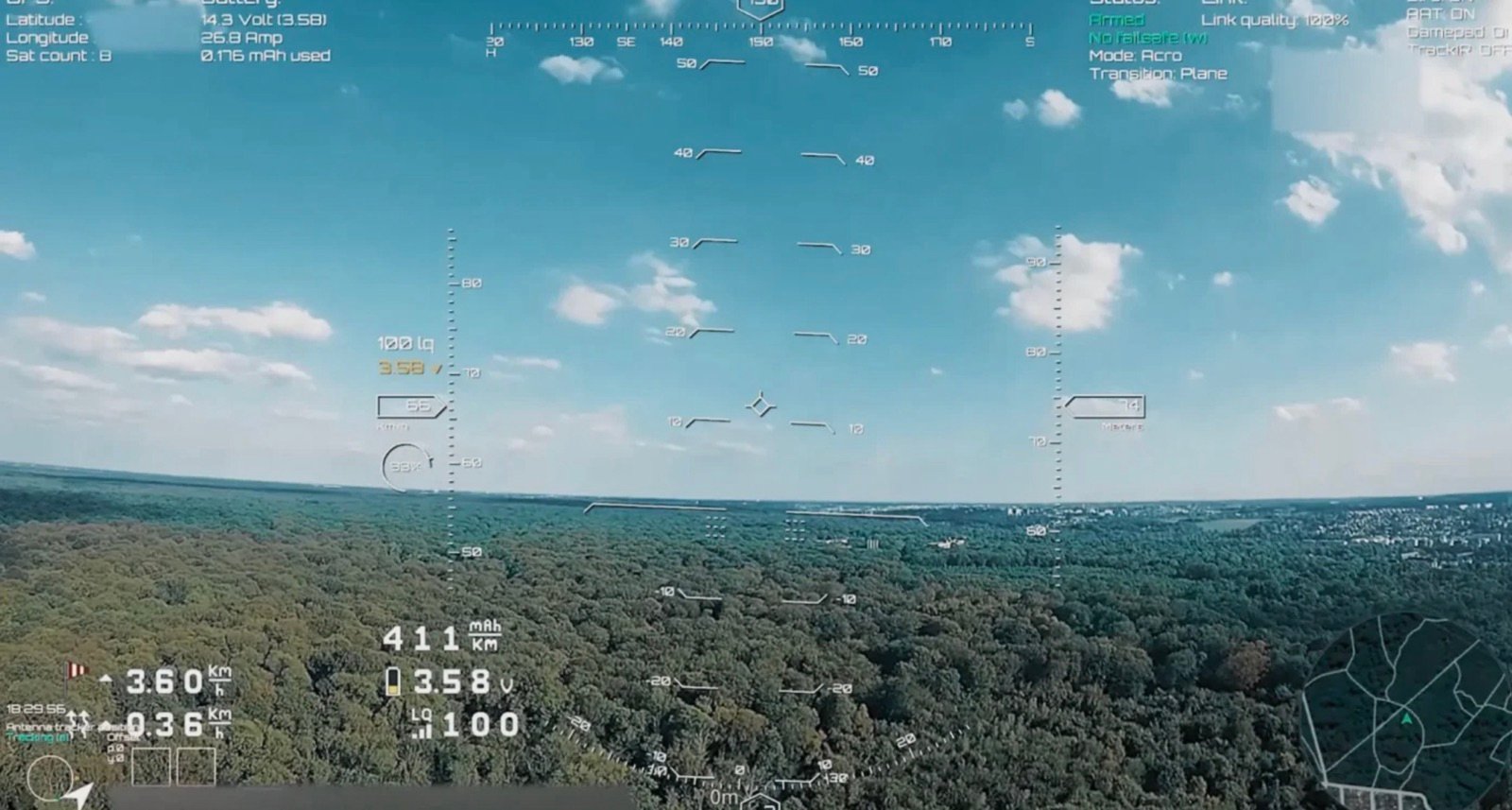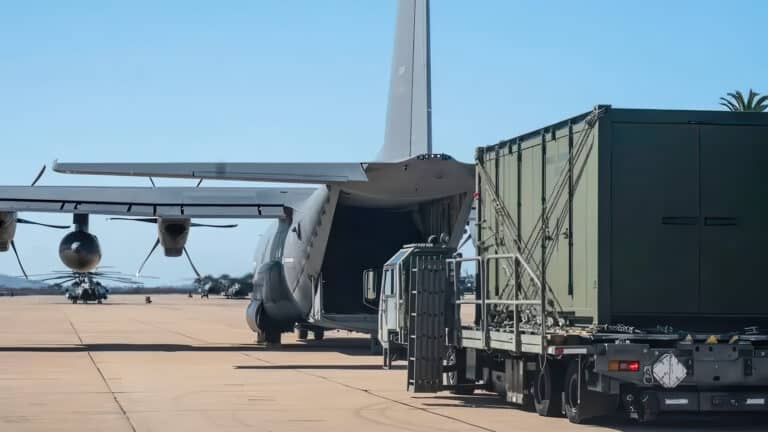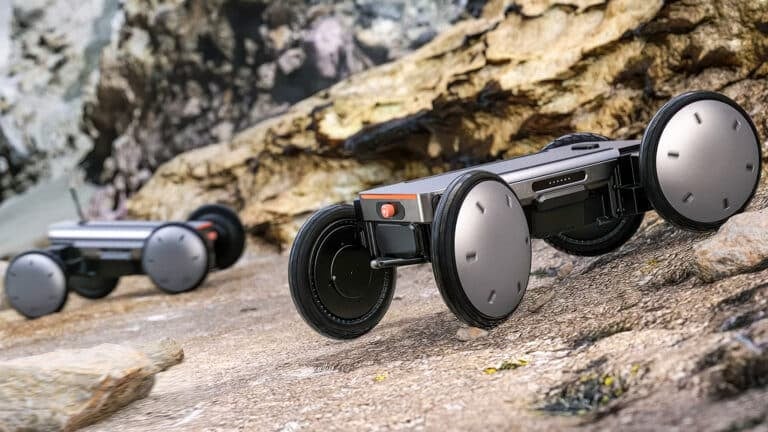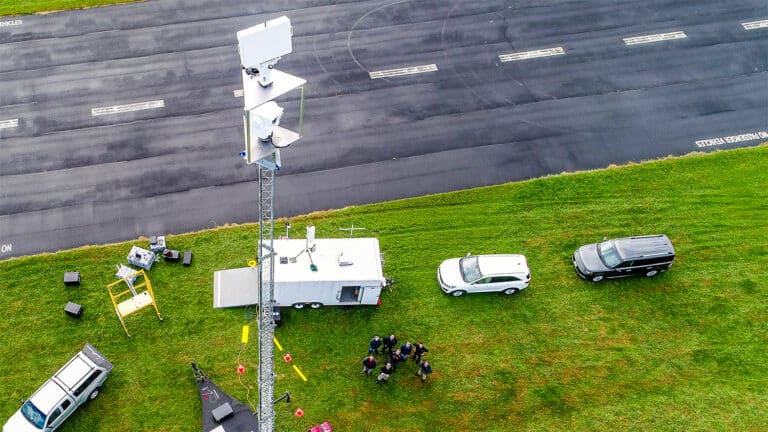French Startup Rift Raises €4.6M For ‘Surveillance-as-a-Service’ Drones That Cost 10x Less Than Helicopters

French deep-tech startup Rift has secured €4.6 million ($4.9 million USD) to build Europe’s first fully autonomous aerial surveillance network, promising 24/7 border monitoring and critical infrastructure protection at a fraction of traditional helicopter costs.
The funding round includes €3 million in equity from New York-based AlleyCorp and Paris-based OVNI Capital, plus €1.6 million in public support.
For drone operators and security agencies across Europe, this signals a major shift toward automated surveillance systems that could reshape airspace restrictions and operational protocols.
The Container-Sized Drone Stations Coming To European Borders
Founded in 2023 by Daniel Nef and Dorian Millière, Rift is developing what it calls “Surveillance-as-a-Service.”
The system combines three core technologies. Long-endurance VTOL drones designed in-house. Autonomous deployment stations the size of shipping containers. And RiftOS, the company’s proprietary mission-control software platform.
“Rift is building the missing link between satellites and ground teams: an aerial intelligence network capable of performing reconnaissance missions in minutes, without a pilot on site,” said Daniel Nef, co-founder and CEO.
Each container-sized station houses multiple drones that operate in continuous relay. This rotation system enables true 24/7 aerial coverage without field personnel.
The entire operation runs remotely. No pilots on site. No support crews stationed at the border.
10x Cost Savings Over Helicopter Surveillance
Rift claims its system costs up to 10 times less than traditional helicopter surveillance operations.
That cost advantage comes from eliminating the most expensive components of aerial monitoring. No pilot salaries. No helicopter maintenance. No fuel costs for manned aircraft. No support crew deployment to remote locations.
The target use cases are clear: border surveillance, coastline monitoring, energy infrastructure protection, and industrial site security.
Rift positions itself against French competitors like Alta Ares (which focuses on drone interception) and Harmattan AI (which builds battlefield drones). Unlike those combat-focused systems, Rift is designed specifically for persistent surveillance in sensitive zones.
All data captured by Rift’s drones remains within European borders. That data sovereignty is a key selling point as Europe pushes for technological independence from U.S. and Chinese systems.
Full Mission Automation By 2027
Rift plans aggressive expansion. The company will use the new funding to scale production of its autonomous drone stations through what it describes as “innovative manufacturing processes.”
The timeline is ambitious. By the end of 2026, Rift plans to double its workforce in R&D, data science, certification, and manufacturing.
By 2027, the company aims for complete mission-cycle automation. Planning, execution, anomaly detection, and reporting without any human intervention.
That means algorithms will decide where to fly, what constitutes suspicious activity, and when to alert security forces. The system would operate entirely autonomously from deployment to final report generation.
For European governments struggling with Russian drone incursions and border security challenges, Rift offers a tempting solution: always-on surveillance that doesn’t require expanding security personnel.
DroneXL’s Take
Rift’s funding arrives at a pivotal moment for European drone defense. Just weeks ago, we covered how Poland abandoned the EU’s stalled “drone wall” initiative to build its own national counter-drone system after 19 Russian drones violated its airspace. The message was clear: Europe needs surveillance solutions now, not after years of Brussels bureaucracy.
That urgency is driving massive investment across European drone defense. Norway deployed NATO’s first operational drone swarm in October. Sweden is accelerating autonomous swarm development ahead of Arctic Strike 25 exercises. Germany just authorized its military to shoot down unidentified drones over domestic territory for the first time since World War II.
Rift’s “Surveillance-as-a-Service” model fits perfectly into this landscape. The 10x cost savings claim echoes what we’ve been documenting across military adoption: the U.S. Army’s plan to deploy 1,000 drones per division by 2026 explicitly prioritizes “inexpensive drone swarms” over multimillion-dollar equipment. AI-powered police drones have spread to 1,500 U.S. departments precisely because they’re cost-effective alternatives to helicopters.
But here’s what concerns us: by 2027, Rift plans fully autonomous missions with zero human oversight. Planning, execution, anomaly detection, and reporting all handled by algorithms. That raises serious questions about accountability when these systems inevitably misidentify threats or surveil innocent civilians.
We’ve documented how Germany’s surveillance crisis involved systematic mapping of critical infrastructure by unidentified drones. Rift’s system could detect such threats but it could just as easily become the threat, depending on who controls the container-sized stations and what they’re programmed to flag as “anomalies.”
The data sovereignty angle is smart marketing. Keeping surveillance data within European borders sounds reassuring until you remember that European governments aren’t inherently more trustworthy with mass surveillance capabilities than American or Chinese ones. The technology enables the abuse. The nationality of the company building it is largely irrelevant.
Commercial drone operators should prepare for increased airspace restrictions as these automated surveillance networks deploy. When you have 24/7 coverage of borders and critical infrastructure, authorities will inevitably tighten flight rules in those zones. The EU’s drone wall initiative already signals a more restrictive regulatory environment ahead.
That said, Rift is solving a real problem. Traditional helicopter surveillance is prohibitively expensive for continuous monitoring. European nations face genuine security threats from Russian hybrid warfare tactics. Cost-effective persistent surveillance could protect critical infrastructure without bankrupting national budgets.
The question isn’t whether Europe needs better aerial surveillance. It’s whether we’re comfortable with the level of automation and the lack of human oversight in these systems. Fully autonomous mission cycles sound efficient, but they also eliminate the human judgment that might prevent overreach.
What do you think? Share your thoughts in the comments below.
Discover more from DroneXL.co
Subscribe to get the latest posts sent to your email.
Check out our Classic Line of T-Shirts, Polos, Hoodies and more in our new store today!

MAKE YOUR VOICE HEARD
Proposed legislation threatens your ability to use drones for fun, work, and safety. The Drone Advocacy Alliance is fighting to ensure your voice is heard in these critical policy discussions.Join us and tell your elected officials to protect your right to fly.
Get your Part 107 Certificate
Pass the Part 107 test and take to the skies with the Pilot Institute. We have helped thousands of people become airplane and commercial drone pilots. Our courses are designed by industry experts to help you pass FAA tests and achieve your dreams.

Copyright © DroneXL.co 2025. All rights reserved. The content, images, and intellectual property on this website are protected by copyright law. Reproduction or distribution of any material without prior written permission from DroneXL.co is strictly prohibited. For permissions and inquiries, please contact us first. DroneXL.co is a proud partner of the Drone Advocacy Alliance. Be sure to check out DroneXL's sister site, EVXL.co, for all the latest news on electric vehicles.
FTC: DroneXL.co is an Amazon Associate and uses affiliate links that can generate income from qualifying purchases. We do not sell, share, rent out, or spam your email.


















